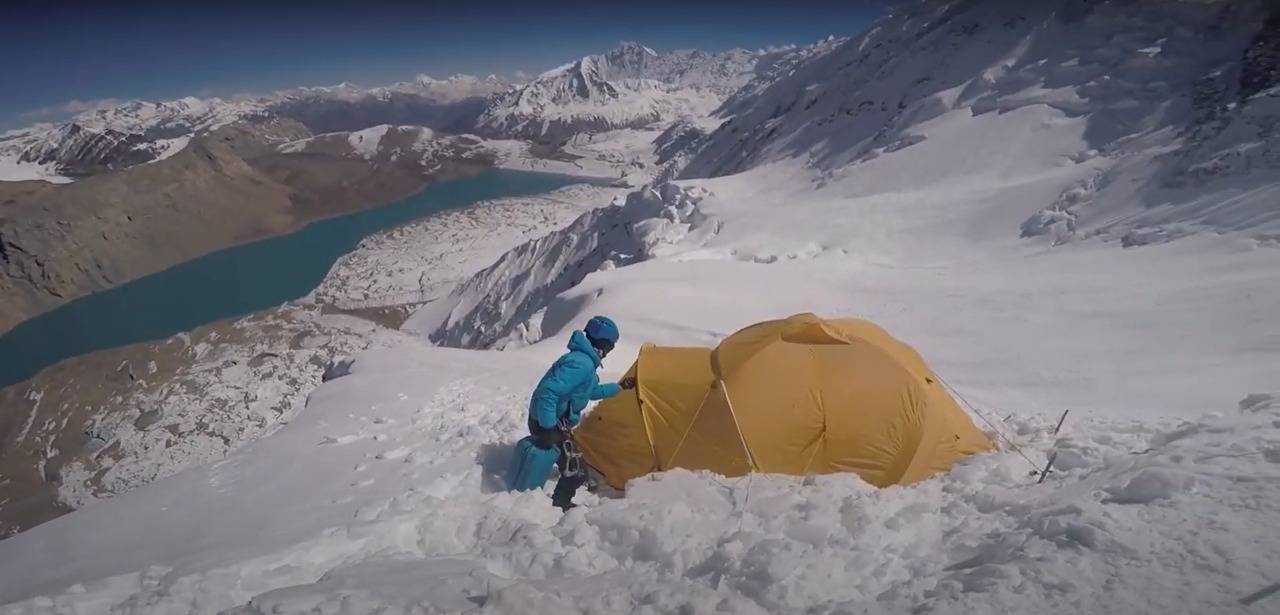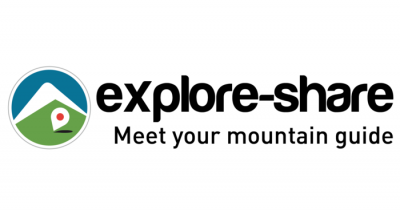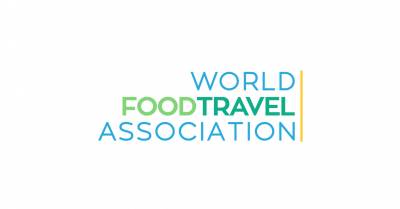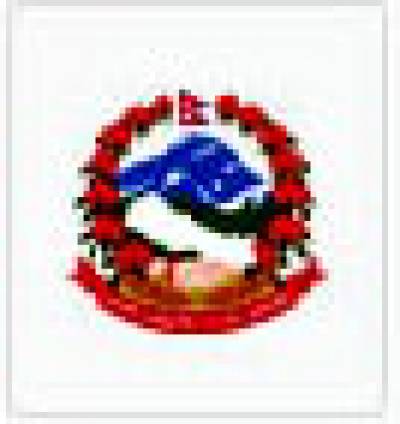TILICHO PEAK EXPEDITION
Tilicho peak (7134m/23,406ft) is another magnificent mountain worth crossing off your wish list. Sherpa Expedition & Trekking, with more than 40 years of trekking and climbing experience will see you safely to the summit. You are in safe hands!
Tilicho Peak is located in the Manang District and sits on a mountain range between Khangsar Kang (7558m) and Nilgiri North (7061m). From the peak, you will be rewarded with views over Tilicho Lake (4920m) located at the base of the peak and is the highest lake in the world with its aqua-blue water. From the summit, you can see the huge massifs of Annapurna and Dhaulagiri, as well as down to the deepest gorge in the world, Kali Gandaki Gorge.
Our climbing base is situated on the shore of Tilicho Lake with Camp 1 at (5800m/19,029ft.) located on a shelf just below the northwest shoulder amidst a rocky and icy terrain. Camp II (6100m/20,013ft) is situated on the shoulder and is reached by climbing a 50-degree slope and a 500 meter stretch of snow. Camp II is protected from extreme weather by the shoulder, making it a safe place to camp. The ascent to Base Camp II and on to the peak requires fixed ropes.
You will be justly rewarded as you reach the summit of Tilicho Peak with some jaw-dropping panoramic views of the Annapurna and Dhaulagiri Himalayan Ranges, which include Lamjung Himal (6932m), Annapurna IV (7525m), Annapurna III (7555m), Annapurna II (7939m), Gangapurna (7454m) and many other startling white peaks.
On the trail from its starting point at Dharapani, on the Annapurna trekking route, you will pass through many Tibetan Buddhist villages with their rich heritage and displays of religious symbols, such as prayer flags, chortens (engraved stones) and monasteries (Gompas). The scenery along the trail is absolutely stunning. From Dharapani we will go via Chame (2670m), Pisang (3100m), and Manang (3440m) villages. We will rest and take time out to acclimatize at Manang. It is highly recommended that during the acclimatization period you stay active. After a day here we move on to Khangsar (3734m), Besi Khola (3955m), and finally, arrive at Tilicho Peak Base Camp (4150m) situated beside Tilicho Lake – our source of water. You will have to boil or sterilize the water before drinking it. At Base Camp, we have plenty of time to rehearse and prepare for our climb to the summit.
After reaching the Tilicho Peak summit we head back to Khangsar, Manang, Pisang, Chame, and then drive to Besisahar and on to Kathmandu.
The most common problem of climbing these peaks can be altitude sickness, hence the reason for taking time along the trail leading to Base Camp and from Base Camp to repeatedly climb and ascend to avoid any complications.
Sherpa Expedition and Trekking take care of everything, from permits, fees, and all accommodation along the trail. Your safety and enjoyment are always our main concern. After more than 40 years in the trekking and climbing business, we understand the difference between a good experience and a great experience. Our reputation speaks for itself.
ITINERARY
Day 1 : Arrival in Kathmandu and transfer to hotel.
Day 2 : Half day Kathmandu Valley Sightseeing and preparation for Expedition
Day 3 : Drive to Besisahar (823m)
Day 4 : Drive to Dharapani (1860m)
Day 5 : Trek to Chame (2670m)
Day 6 : Trek to Pisang (3100m)
Day 7 : Trek to Manang (3440m)
Day 8 : Rest day at Manang for acclimatization.
Day 9 : Trek to Khangsar (3734m)
Day 10 : Trek from Khangsar to Besi Khola(3955m)
Day 11 : Trek fromBesi Khola to Tilicho Peak Base Camp (4150m), camp.
Day 12 - 28 : Climbing period; Tilicho Summit (7135m)
Day 29 : Pack up and preparation for returning.
Day 30 : Trek to Khangsar, lodge.
Day 31 : Trek from Manang to Pisang, lodge.
Day 32 : Trek from Pisang to Chame, lodge.
Day 33 : Drive to Besisahar, lodge.
Day 34 : Drive from Besisahar to Kathmandu, hotel.
Day 35 : Leisure day in Kathmandu.
Day 36 : Final departure.
SERVICES
Full Board Service Includes
- All arrival and departure transfer services to and from KTM international airport with other necessary transport as per itinerary
- Assistance at KTM international airport by Sherpa Expedition and Trekking during your arrival and departure.
- 4-night hotel accommodation in Kathmandu on B/B basis
- One night hotel accommodation in Pokhara. B/B plan
- Experienced and government licensed trekking and climbing Sherpa guide during the trekking and climbing period
- The appropriate number of porters during the trekking period
- Land transportation from Kathmandu-Beshisahar and Pokhara to Kathmandu for all climbing members, Sherpa guide, liaison officer and kitchen staff
- All Sherpa Expedition and Trekking kitchen tent, storage tent, dining tent, client tents, toilet tents, tables, chairs and cooking utensils for base camp
- Common climbing equipment such as Rope, ice bars, ice screws, and snow bar
- 3 meals a day: Breakfast, lunch, and dinner with tea/coffee
- Accommodation at hotel/lodge/guest house or tent camps during the trekking/climbing period
- All camping accommodation for members and staff during the trekking and climbing period. You will be sharing sleeping quarters with one other member
- All food and fuel for base camp and higher camps during the climbing period
- 50kg baggage allowance per person during the trekking period. This will be carried by porters/mules
- Daily weather report services from Seattle, the Washington based company
- Services of chef and kitchen assistant at advance base camp
- Trekking Permit (Annapurna Conservation Park entry fee)
- TIMS card (Trekking Information Management System)
- Expedition Royalty and permit of Nepal government to climb Mt.Tilicho Peak
- Nepalese Government Royalty
- One experienced, trained, government licensed and 3-time summiteer climbing guide (Sherpa) per person
- All wages, equipment, medical and accident insurances for all involved staffs during the trekking and climbing period
- Helicopter rescue insurance for all involved expedition staff
- Medical consultation services at the base camp with the HRA clinic at base camp
- Equipment allowances and wages for climbing Sherpas, cooks, kitchen assistant and government liaison officer
- First aid medical kits for the group and the staff
- Satellite phone carried by guide for communication. Available to clients at a cost of $3USD per minute
- Appropriate high altitude food for all clients and staff at base camp and above as required
- Required fixed and dynamic rope during the climbing period
- Emergency oxygen mask and regulator provided upon request of the client with requirement appropriate charge
- Solar panel for light and electronics charging
- All tents for camp 1, 2 and 3. Icefall charges
- Gamow Bags (Portable hyperbaric chambers) for high altitude sickness
- 2 Bottles (8L) of Poisk Oxygen will be provided for each member
- The latest model of Summit or Top out system mask and regulators will be provided
- We provide Sherpa's tents, food for climbing and insurance
- Free assistance service for cargo clearance and duties
- EPI cooking gas and stove will be provided in camp one, three and South Col for cooking food
- The generator will be providing to back-up the lighting in base camp
- Transportation of food supply from Kathmandu to base camp by porter/mules
- Our service charge and government taxes levied in Nepal
- Complete pre-departure information
- Flight ticket re-confirmation and visa extension procedure services
- Farewell dinner in a typical Nepali restaurant with cultural show in Kathmandu before departure
- Sherpa Expedition and Trekking t-shirt and scarf
Full Board Service Excludes
- Lunch and dinner during your stay in Kathmandu (except for the farewell dinner).
- Any packed food/snacks, aerated drinks, energy drinks, mineral water, alcohol, cigarettes, chocolates, or any other food consumed beyond the prescribed breakfast, lunch and dinner.
- Expenses incurred towards usage of landlines, mobiles, walkie-talkies, satellite phones, and internet expenses.
- Clothing, packing items or bags, personal medical kit, personal trekking gear.
- Any extra expenses arising out of various/unforeseen situations like natural calamities, landslides, political disturbances, strikes, changes in government regulations, etc.
- Transportation services include only what is listed on the itinerary. Any extra distance traveled will be appropriately charged.
- Any additional staff other than specified.
- Rescue, repatriation, medicines, medical tests and hospitalization expenses.
- Medical insurance and emergency rescue evacuation if required.
- Travel insurance and helicopter rescue.
- Walkie-talkies
- Filming permit (if you have a special camera).
- Personal climbing gear.
- Nepal custom duty for import of expedition equipment.
- Items of personal nature, laundry expenses, tips.
- Tips, gifts, souvenirs.
- Airfare of international flights.
- Nepal entry visa fee (easy to obtain the visa on arrival at Tribhuvan International Airport – Kathmandu). $30 USD for 15-day, $50 USD for 30 Days, and $125 USD for 90 Days visa.
- Any extra services, products, offers or activities which are not mentioned in the itinerary.
- Any other item not included in the cost includes section.
EQUIPMENTS
Travel Documents
- Valid Passport
- Credit Cards
- Pp Size Photo (4 Pieces)
- Insurance Paper And Contact Address.
- Family Members / Company’s Contact Address
Foot Wear
- Kailas / Lasportiva / Millet (Summit Shoe)
- Normal Socks (5-6 Pairs)
- Summit Socks (2 Pairs)
- Trekking Shoes (1 Pair)
- Camp Booties (1 Pair)
- Basecamp Slipper (1 Pair)
Upper Body
- Light Weight Top / Thermo Coat (2-3 Layers)
- Mid Weight Top (2-3 Layers)
- Heavy Weight Top (2 Layers)
- Fleece Jacket (1)
- Gore Text Jacket (1)
- Down Jacket (1)
- Wind Proof Jacket
- Cotton T-Shirt For Base Camp. (2-3)
Lower Body
- Light Weight Long Under Pants (2-3 Pairs)
- Under Wear (5-7 Pairs)
- Mid Weight Long Under Pants (2-3 Pairs)
- Heavy Weight Long Under Wear
- Gore Text Pant. (1)
- Down Pants. (1)
- Water Proof Pant. (1)
Head
- Sun Cap
- Desert Cap
- Balaclava
- Fleece Hat
- Neck Gaiter (2-3)
Hands
- Thin Fleece Gloves (2 Pairs)
- Wind Stopper Fleece Gloves
- Heavy Gloves (Mitten)
- Summit Gloves
Sleeping Bags
- Sleeping Bag - 20 Degree Celsius (For Base Camp)
- Down Sleeping Bag - 20 To -40 Degree Celsius (Extreme Comfort)
- Thermarest Mattress (Cell Foam)
- Thermarest Mattress (Inflatable)
Climbing Equipment
- Climbing Helmet
- Down Suit (Kailas / Marmot / Mountain
- Hardware / North Face / Millet )
- Crampons (Fit with Boot)
- Ice Axe
- Harness
- Atc Guide
- Jummer / Ascender
- Lock Carabiner (3)
- Unlock Carabiner (3)
- Tape Slings (2)
- Prusik Loops (1)
- Snow Goggle
- Head Light (4 Pairs Rechargeable Batteries Recommended)
- Satellite Phone
- Hand Warmer (If Possible)
Bag Packs
- Rucksacks 45L - 55L
- Duffle Bag 90 L -120 L (2 Pieces)
- Water Proof Stuff Sacks Large (2 Pieces)
- Water Proof Stuff Sacks Small (2 Pieces)
Sun Stuffs
- Banana Boat/ Nivea Sun Cream -50 (Spf)
- Lip Guard -20 / -50 (Spf)
- Sun Glasses (UV Protection)
- Glaciers Glasses (UV Protection)
Toiletries
- Hand Disinfectant
- Wet Tissue
- Toothpaste
- Toothbrush
- Soap
- Shampoo
- Garbage Bag
Eating & Drinking
- Water Bottle (2)
- Thermos
- Mug
- Spoon/ Fork
- Bowl
Medical
- Brufen / Ibuprofens
- Antibiotic
- Diamox
- Paracetamol
- Handy Plaster
- Crack Bandage
- Tincture Iodine
Miscellaneous
- Walking Stick
- Pocket Knife (Swiss)
- Umbrella / Rain Coat
GOOD TO KNOW
Tilicho Peak is a popular mountain peak located in the Annapurna region of Nepal. Here are some important details to know about the Tilicho Peak Expedition:
1. Altitude: Tilicho Peak stands at an elevation of 7,134 meters (23,405 feet) above sea level.
2. Difficulty Level: The climb to Tilicho Peak is considered to be technically challenging and requires prior mountaineering experience. It is classified as a difficult mountain to climb.
3. Duration: The expedition typically takes around 30 days, including acclimatization and climbing periods.
4. Permit: A climbing permit is required to attempt Tilicho Peak. This can be obtained from the Nepal Mountaineering Association (NMA) in Kathmandu.
5. Guides and Sherpas: It is highly recommended to hire experienced guides and Sherpas who are familiar with the region and can provide necessary support during the expedition.
6. Route: The most common route to Tilicho Peak starts from the village of Manang and follows the Annapurna Circuit trail. From there, climbers branch off towards Tilicho Base Camp and proceed to the summit.
7. Acclimatization: Adequate acclimatization is crucial for a successful climb. It is recommended to spend a few days in Manang or nearby villages to adjust to the altitude before heading to higher camps.
8. Weather: The best time to attempt Tilicho Peak is during the spring (April-May) and autumn (September-November) seasons when the weather is generally stable and visibility is good.
9. Equipment: Climbers must be well-equipped with proper mountaineering gear, including ice axes, crampons, harnesses, helmets, and ropes. It is also important to carry warm clothing, sleeping bags, and necessary camping equipment.
10. Safety: Climbing at high altitudes always carries risks. It is important to prioritize safety and follow the guidance of experienced climbers, guides, and Sherpas. Adequate training and physical fitness are essential for a successful and safe expedition.
Remember to always do thorough research, consult with experts, and plan accordingly before attempting Tilicho Peak Expedition.
MAP
PHOTOS/Videos
Departures
Select a departure month
Fill out the form below and a Travel Expert will reach out to create your perfect tour.
FAQS
How long does it take to climb Tilicho Peak?
The entire expedition typically takes around 30 days, including acclimatization and climbing periods.
What is the best time to climb Tilicho Peak?
The best time to attempt Tilicho Peak is during the spring (April-May) and autumn (September-November) seasons when the weather is generally stable and visibility is good.
Is previous mountaineering experience required?
Yes, previous mountaineering experience is highly recommended to attempt Tilicho Peak. It is considered a technically challenging climb, so climbers should have a good understanding of mountaineering techniques and be comfortable with high altitude conditions.
Do I need a climbing permit for Tilicho Peak?
Yes, a climbing permit is required to attempt Tilicho Peak. You can obtain the permit from the Nepal Mountaineering Association (NMA) in Kathmandu.
What kind of physical fitness is required for the expedition?
Climbing Tilicho Peak requires excellent physical fitness. It is recommended to have prior experience with high altitude trekking and mountaineering. Regular cardiovascular training, strength training, and endurance exercises are crucial to prepare for the expedition.
Do I need to hire a guide or Sherpa?
It is highly recommended to hire experienced guides and Sherpas who are familiar with the region and can provide necessary support during the expedition. They can assist with navigation, carrying equipment, and ensuring your safety.
What kind of equipment do I need?
Climbers must be well-equipped with proper mountaineering gear, including ice axes, crampons, harnesses, helmets, and ropes. Additionally, warm clothing, sleeping bags, camping equipment, and high-altitude food supplies are essential.
Are there any risks involved in climbing Tilicho Peak?
Climbing at high altitudes always carries risks. Altitude sickness, extreme weather conditions, avalanches, and falls are some of the potential dangers. It is important to prioritize safety, follow the guidance of experienced climbers, and be prepared for emergency situations.
Are there any rescue services available on the mountain?
In case of emergencies, there are rescue services available in the region. However, it is important to have travel insurance that covers helicopter rescue and medical evacuation.
Can I combine Tilicho Peak with other treks in the region?
Yes, Tilicho Peak can be combined with other treks in the Annapurna region, such as the Annapurna Circuit or Annapurna Base Camp trek. This allows climbers to experience the stunning landscapes and diverse culture of the area.
Latest Traveller’s Reviews
Travel experiences of our clients who recently returned from their trips.
100%
Based On 4 Reviews
Nayla Jones
New Zealand
November 2, 2023
A journey of self-discovery
The Tilicho Peak Expedition is not just a physical challenge, but also a journey of self-discovery. It pushes you to your limits and teaches you the importance of perseverance, determination, and mental strength. The sense of accomplishment and personal growth that comes from conquering Tilicho Peak is truly life-changing.
Ahmed Mizouri
Austria
August 29, 2023
"A thrilling and rewarding climb
The Tilicho Peak Expedition is a thrilling and rewarding climb that offers a true sense of accomplishment. From the base camp to the summit, every step of the journey is filled with breathtaking views and a sense of adventure. It's a challenging expedition that tests your mountaineering skills and rewards you with memories that will last a lifetime.
Sally Hamor
Sweden
October 21, 2021
Experienced guides and excellent support
Choosing to climb Tilicho Peak with Sherpa Expedition and Trekking was a wise decision. Their team of experienced guides provided excellent support and guidance throughout the expedition. From the initial planning stages to the final descent, their expertise and attention to detail ensured a safe and successful climb.
People Considering This Package Right Now Check availability























